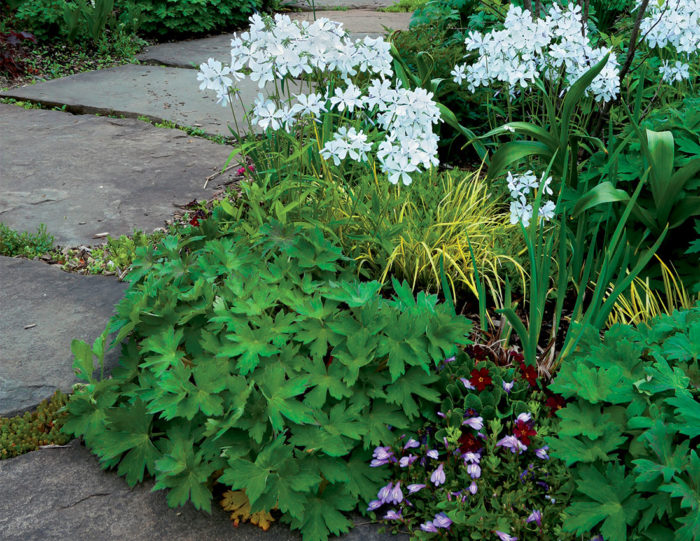
Every garden should have something going on after spring flowers fade and before the summer show really gets going. But in some gardens, this in-between season is punctuated mainly by the spent foliage of spring-blooming bulbs and the amorphous, leafy forms of later-blooming perennials.
To find inspiration for this tricky time of year, I traveled to Linden Hill Gardens in Buck’s County, Pennsylvania. This is the home base of Jerry Fritz Garden Design, where visitors can see full-grown specimens of Jerry’s most frequently recommended plants, combined beautifully in beds and borders. Following are some of the inspiring combinations that bring enticing colors and textures to Linden Hill’s late-spring show.
Delicate textures for a border’s edge
‘May Breeze’ phlox is a compact selection from a North American native species; its fragrant, midspring flowers bloom for almost a month. As it finishes, the Siberian cranesbill starts to supply waves of warm violet blooms that continue until fall. Creeping mazus and ‘Wanda’ primrose provide plenty of spring color in a small package, and sweet flag weaves threads of golden foliage into the mix.
- Creeping mazus (Mazus reptans, Zones 5–8)
- ‘Wanda’ primrose (Primula ‘Wanda’, Zones 3–9)
- Siberian cranesbill (Geranium wlassovianum, Zones 5–8)
- ‘Ogon’ grassy-leaved sweet flag (Acorus gramineus ‘Ogon’, Zones 5–9)
- ‘May breeze’ woodland phlox (Phlox divaricata ‘May Breeze’, Zones 4–8)
Poppies provide a pop of color
Although their blooms do not last long, poppies put on a flamboyant show at just the right time to kick off the summer season. Foliage-focused shrubs and long-blooming perennials such as speedwell and catmint keep performing after the poppies take their final curtain call.
- Moss stonecrop (Sedum acre, Zones 4–9)
- ‘Pool Bank’ catmint (Nepeta grandiflora ‘Pool Bank’, Zones 4–9)
- Donkeytail spurge (Euphorbia myrsinites*, Zones 5–9)
- ‘Lauren’s Grape’ poppy (Papaver ‘Lauren’s Grape’, annual)
- ‘Vicaryi’ privet (Ligustrum ‘Vicaryi’, Zones 5–8)
- Wine & Roses® weigela (Weigela florida ‘Alexandra’, Zones 4–8)
- ‘Turkenlouis’ Oriental poppy (Papaver orientale ‘Turkenlouis’, Zones 3–7)
- Silver speedwell (Veronica spicata ssp. incana, Zones 3–8)
*See invasive alert below.
A pretty mix of patterns
Perfect under small trees or any lightly shaded spot, these low-growing plants combine to create an appealing ground cover. All three appreciate regular moisture, good drainage, and protection from intense sun. Maintaining these conditions will keep the foliage looking lush over a long season, with spring flowers as a charming bonus.
- Pulmonaria (Pulmonaria cv., Zones 4–8)
- Variegated Solomon’s seal (Polygonatum odoratum ‘Variegatum’, Zones 3–8)
- ‘Sulphureum’ epimedium (Epimedium × versicolor ‘Sulphureum’, Zones 5–9)
Subtle spring color for shade
Hostas look good over a long season, but they’re especially stunning in late spring as fresh leaves unfurl. Providing a charming distraction from fading bulb foliage, ‘Frances Williams’ offers a mix of glaucous blue and shimmering chartreuse that ties in well with bright-leaved ‘Daybreak’ hosta and icy amsonia blooms.
- ‘Blue Ice’ amsonia (Amsonia ‘Blue Ice’, Zones 4–9)
- ‘June’ hosta (Hosta sieboldiana ‘June’, Zones 3–8)
- ‘Horatio’ goat’s beard (Aruncus ‘Horatio’, Zones 4–7)
- ‘Daybreak’ hosta (Hosta ‘Daybreak’, Zones 3–8)
A larger-scale planting that feels bright and airy
River birch loves moist soil, and here it is combined with a glorious array of other moisture-loving plants. Lacy elderberry leaves, swordlike iris foliage, and frothy sweetspire blooms provide an abundance of fine texture in the dappled shade of the birch.
- Lemony Lace® elderberry (Sambucus racemosa ‘SMNSRD4’, Zones 3–7)
- Variegated Japanese iris (Iris ensata ‘Variegata’, Zones 4–8)
- Queen of the prairie (Filipendula rubra, Zones 3–8)
- ‘Henry’s Garnet’ Virginia sweetspire (Itea virginica ‘Henry’s Garnet’, Zones 5–9)
- Heritage® river birch (Betula nigra ‘Cully’, Zones 4–9)
- Umbrella plant (Darmera peltata, Zones 5–7)
Two baptisias are better than one
Baptisias are tough, long-lived North American perennials that provide abundant food for pollinators and hummingbirds from late spring to early summer. Here, two yellow-flowered varieties double the warm color in a late spring border, which is complemented by a pool of cool blue amsonia blooms.
- ‘Blue Ice’ amsonia (Amsonia ‘Blue Ice’, Zones 4–9)
- ‘Screamin’ Yellow’ baptisia (Baptisia sphaerocarpa ‘Screamin’ Yellow’, Zones 5–8)
- ‘Carolina Moonlight’ baptisia (Baptisia ‘Carolina Moonlight’, Zones 4–9)
*Invasive alert: Donkeytail spurge (Euphorbia myrsinites)
This plant is considered invasive in CO, OR, UT, and WA.
Please visit invasiveplantatlas.org for more information.
Carol Collins is the associate editor.
Photos: Carol Collins


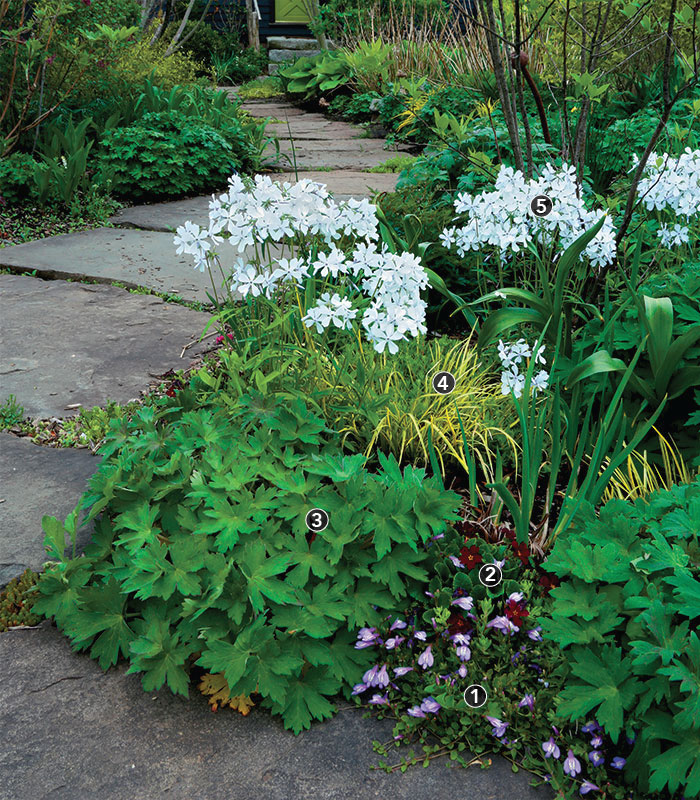
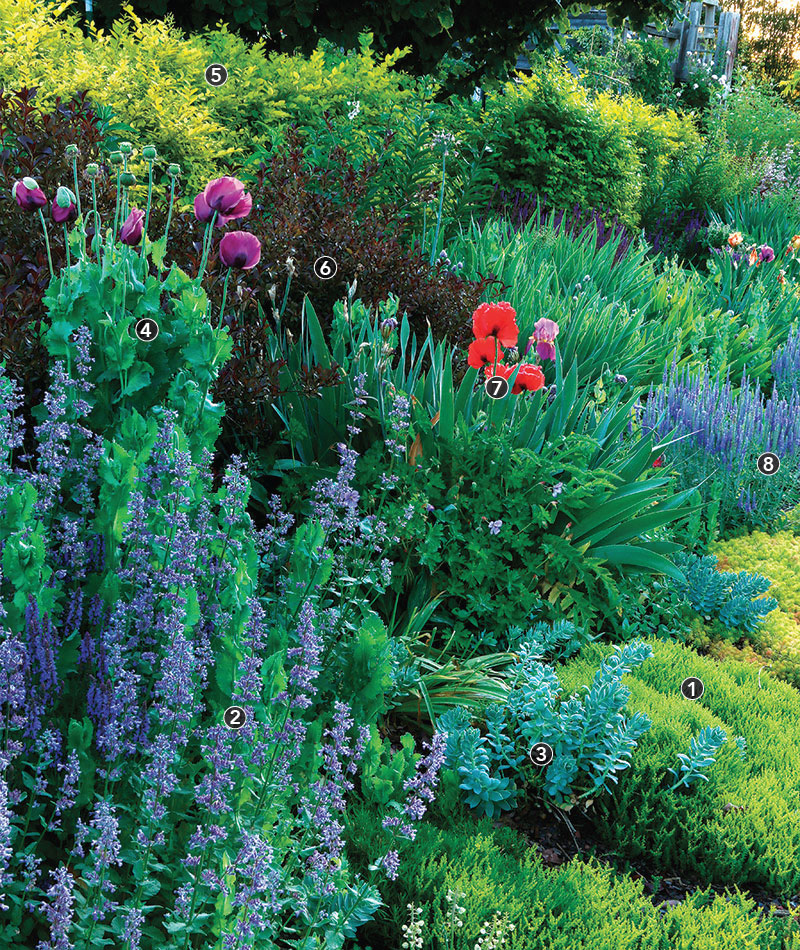
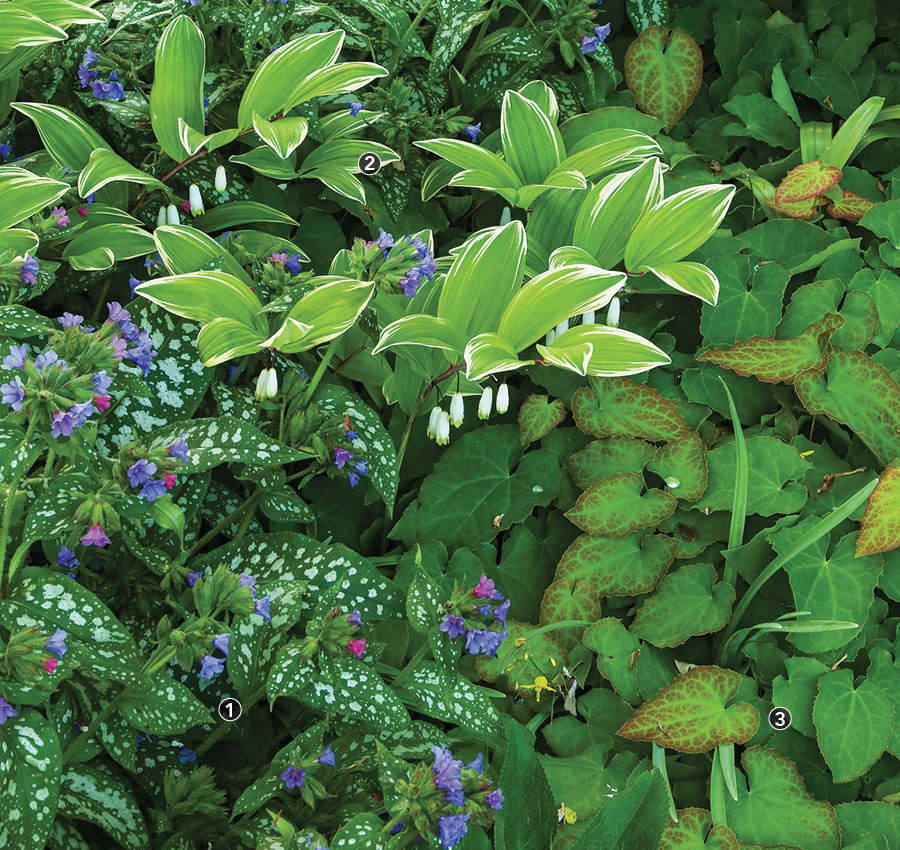
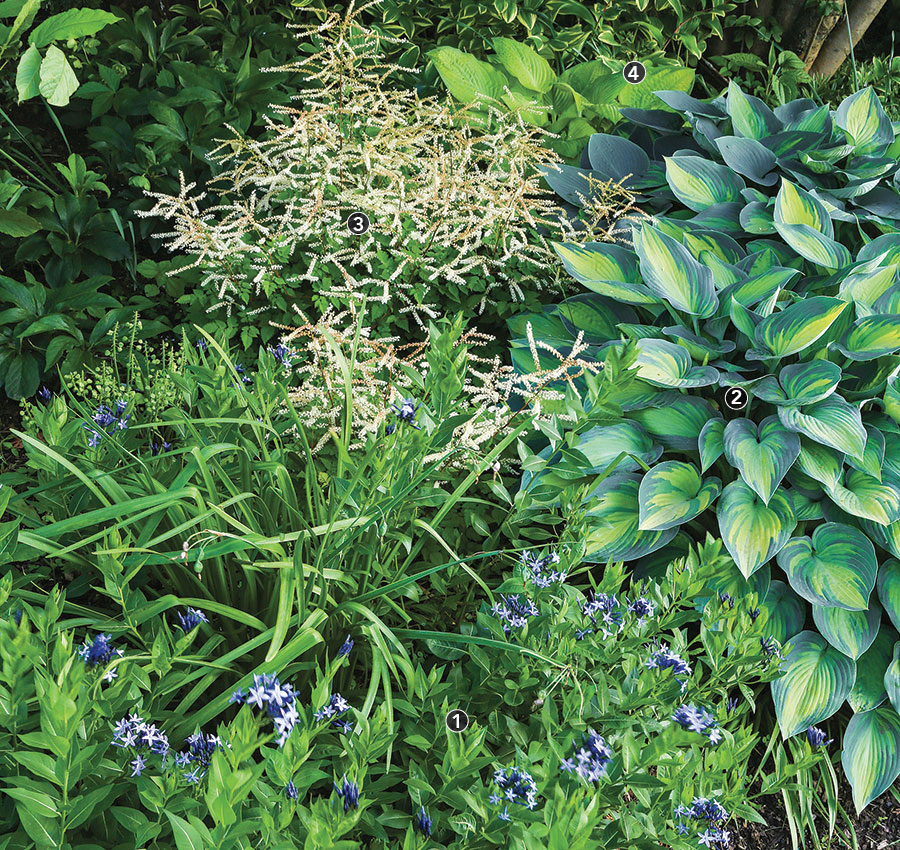

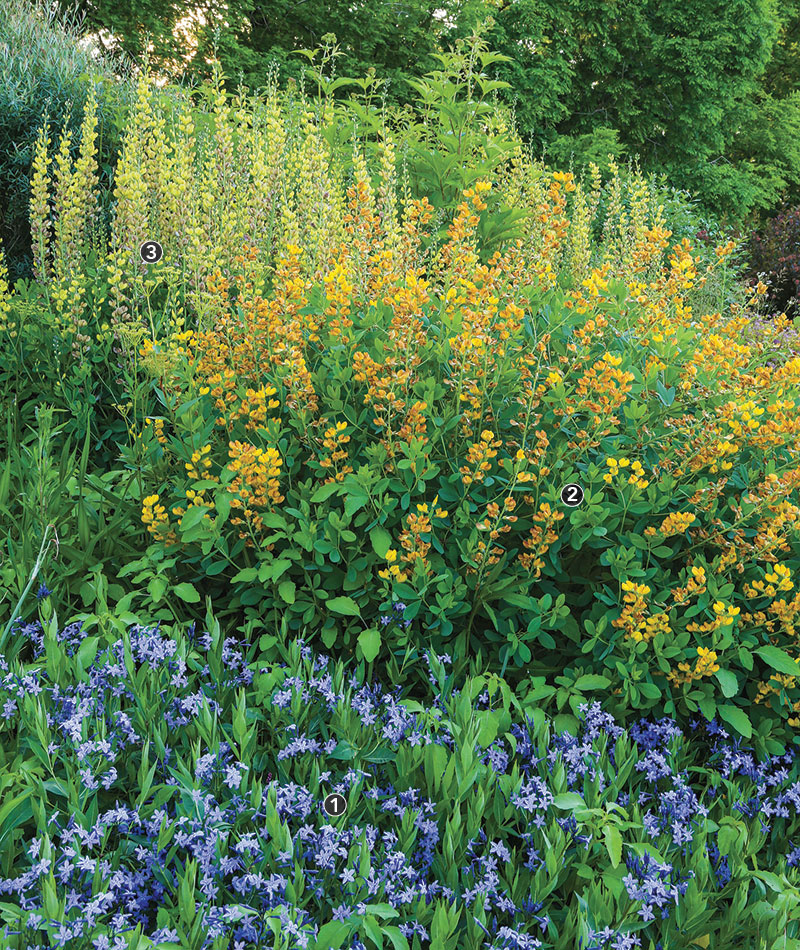


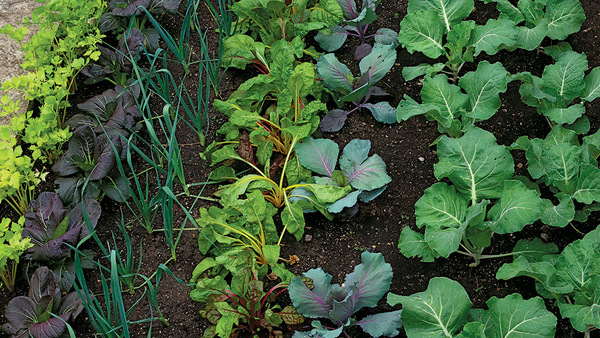













Comments
Log in or create an account to post a comment.
Sign up Log in